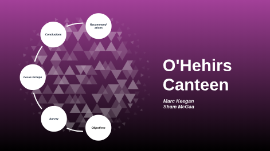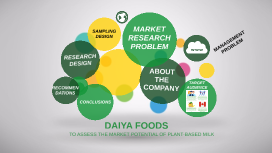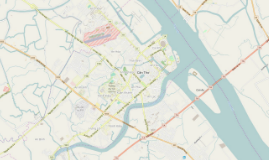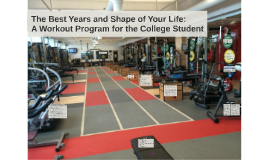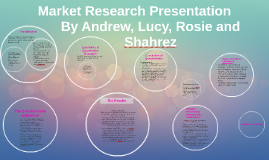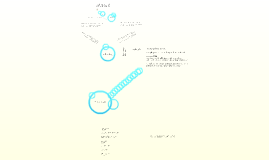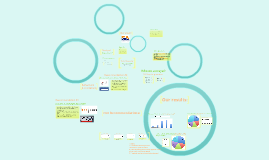Market Research Presentation
Transcript: Introduction Introduction Marketing Decision Problem Which cash collection types does Bottomline need to consider and cater for in the development and delivery of its payment software to companies? Research Question What are the most preferred payment methods (Direct Debit, Debit or Credit Card, PayPal, Bank Transfer, Cheque, etc.) for consumers when paying a business and how is this decision made? Aims & Purpose Aims & Purpose Aims 1. To find out different types of preferred payment methods that consumers use within the supermarket industry. 2. To understand the consumer decision making process, what are their needs and what factors influence their choices (i.e Trustworthy, Security, Convenience). 3. To understand what kinds of payment methods will impact society the most in the future. Purpose The purpose of our research is to understand the consumer payment habits and how their decision making process is made, within the supermarket industry to benefit Bottomline Technologies. Research Methods Research Methods Objectives - Secondary Data - Questionnaire Design - Accumulation of Data, Data Collection, Respondence Rates & Research Order Secondary Data Secondary Data Source from: Bottomline Technologies' Annual Report 2017 Our Customers Our customers are in industries such as banking, financial services, insurance, healthcare, technology, retail, communications, education, media, manufacturing and government. Our customers include leading organizations such as Bank of America Merrill Lynch, Berkley Risk Administrators, British Telecommunications plc., Capital One, CIBC, Cigna Corporation, Citizens Bank, Deutsche Bank, Franklin Templeton Investments, Fidelity Investments, HSBC, Johnson Controls, Inc., JPMorgan Chase, Lloyds Bank, Metro Bank, Regions Financial Corporation, Santander Bank, Starling Bank, State Farm Insurance, Tesco Stores Ltd., The Hartford,Vodafone and Zurich American Insurance Company 15.4 billion cash payment were made during 2016. Cash Debit Card Payment for debit card increases 14% over the year to 11.6 billion payments in 2016. Credit Card 9% percent increase for the credit card payment which is a total of 2.8 billion payment were made Contactless A 2.7 times growth for the contactless which total to 2.9 billion contactless payment were made in 2016. Online Pay Accounting for 499 million payments in the UK in 2016. People in the younger age groups are currently more likely to use these payment method. Cheque A declining of continue. In year 2016, a declining of the cheque payment were in the 14% from 2015. Secondary Data (continued) In 2016, 38.7 billion payment were made in the UK (Consumer, Businesses, Government and non-profit organisation). Questionnaire Design Questionnaire Design Methods of Data Collection & Research Orders Methods of Data Collection & Research Orders 1) Observation (2 Hours) - Carried out thirty-minute observation in four different supermarkets, to gather an idea of payment methods for our online survey. To see how commonly people use each payment method to purchase the groceries in the supermarket 2) Pre Test Online Survey (23 Participants) - Spent one-week pre-testing questionnaire. 3) Online and Offline Surveys (103 Participants) Response rate: 90% - Shopping markets, town centres, NHS. To see if the data support the theme and see what are people payment preference when purchasing groceries 4) 1 to 1 Interview (1 Participant) - Interviewed the area Manager Matt at Tesco Ltd store (in Reading) who has been working in the industry for over 20 years. To gain an insight into the supermarket industry payment trends. 5) Interview (15 Participants) - Interview a variety of different non-probability sampling participants in order to acquire a fair representation of society. To gain understanding of people groceries shopping payment preference and understand reasons behind each payment 6) Focus Group (6 Participants) - Conducted a focus group of six individuals regarding the supermarket industry. To have a deep understanding of people's reasons behind each payment decisions Utilising past knowledge from lectures, further readings and the last five steps to gain further incite. Data Analysis & Findings Data Analysis & Findings Objectives: - Consumer Behaviour Findings - Results for consumers Payment Preferences (Q1) - The consumers Motivations finidngs (Q2) - Consumer Payment Awarness Findings (Q3) Focus Group & Interviews Focus Group & Interviews “I prefer using a credit card (Contactless) as my first choice of payment. This is due to how easy this payment is especially when shopping. Contactless allows me to conduct small payments relatively quickly". "I trust the Online Payment method because I can recevie notifications for every single purchase payment that I conduct online". "As I am an older gentleman, my mobility affects how often I manage to go outside. Therefore I shop online using either Direct Debit or Paypal and my age does have an impact on how often I am able






